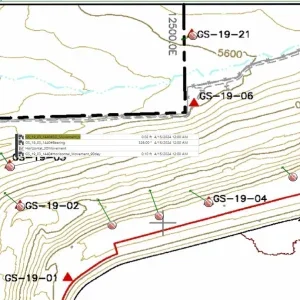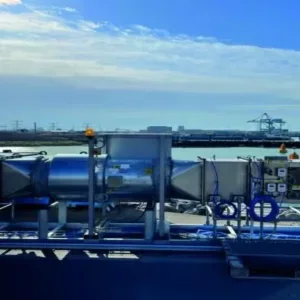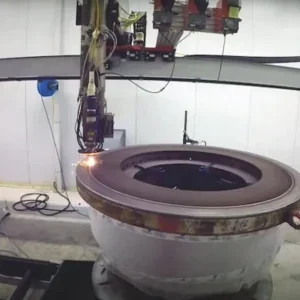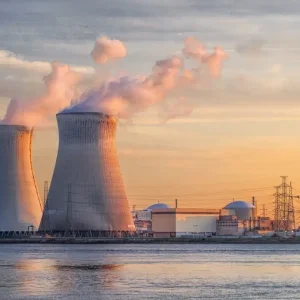
Located in the Diaoluo Mountain Area in eastern Hainan, China, Diaoluo River is under the administration of the Diaoluo Mountain Forestry Bureau. The area boasts thick forests and abundant rainfall, with comparatively evenly distributed annual runoff and a large natural river fall, meaning it is ideally suited for hydropower development.
Construction work on the 3.2MW Diaoluo River 2nd Cascade Hydropower Station began in November 2004, with power generation starting in March 2006. The project was designed by the Hangzhou Regional Center (Asia-Pacific) for Small Hydropower (HRC), with investment from the Electric Power Corporation of Hainan province and Diaoluo Mountain Forestry Bureau.
Project details
The Diaoluo River covers 12.3km with a total basin area of 25.61km2 – the Diaoluo River 2nd Cascade hydropower station enjoys a catchment area of 13.59km2. The Diaoluo River basin belongs to a tropical island monsoon climate with an annual average precipitation of 2483.6mm.
The hydro project is a diversion type with a design head of 286mm and installed capacity of 2×1600kW. The annual average power generation is 13.91MkWh.
The main civil structures include the anti-flood low weir, the intake, the open diversion flume (aqueduct), the forebay, penstock and powerhouse.
With a length of 22.8m and a height of 1.7m, the anti-flood low weir is located at the upper end of the waterfall. It is stone mortar with concrete facing.
The open diversion flume (aqueduct) is of stone blocks with cement mortar structure 442m long, 1m wide and 1.3m deep. It is covered by a prefabricated reinforced concrete plate.
The penstock has ten slopes with angles ranging between 7.3°-35.3°. It has a total length of 672m with a diameter of 0.8m.
Two Pelton turbine generators are installed in the main powerhouse, with a unit capacity of 1600kW, a rated head of 286m, rated flow of 0.68m3/sec and a rated speed of 750r/min.
The outdoor 35kV step-up substation is 15m long and 9.7m wide. An automatic monitoring system is used at the station.
The total investment of the project was 14.5M Yuan (US$1.95M [2006 prices]). Presently, sale price to the grid is 0.28 Yuan/kWh (0.041US$/ kWh). Static payback period is 5.8 years.
There are currently eight operators for the station who were originally lumbermen. Their homes are near the station so there was no need for living quarters to be built.
Main characteristics
Environmental protection
The construction of hydropower projects can sometime have negative impacts on the natural ecology of the project area. Design of the Diaoluo project was optimised to avoid negative impacts. The hydro station is located in the transition zone of the Nature Reserve. During design, HRC regard the environmental protection as a priority, adopting small-sized structures as often as possible to avoid concentrated and large-scale excavation to the ground surface. Through this, large trees can be reserved and water loss and soil erosion can be reduced. The bushes affected during the construction period can be recovered two or three years after the construction is complete. At present, the excavated surface has been covered by grass and bushes.
Layout suitable for local conditions
The headworks were located at the upper end of the waterfall, which is composed of intact rocks. The flow is usually at the channel of the upper end of the waterfall only; a river channel lies between the upper end and the right bank. HRC arranged an overflow weir, silt sluicing gate at the channel in the upper fall, and an intake at the right upper reaches of the gate. A trans-river channel aqueduct was connected after the intake, diverting water into the diversion canal in the right bank. Such arrangement allows for less excavation and no need for treatment of the foundation, thus resulting in much less engineering work.
For water transfer, the aqueduct is set up on the rush channel, making use of a large rock as the buttress.
Simplified civil works
The largest building on the project is the powerhouse, the other components are very small structures (the anti-flood low weir is 1.7m high, the width of the channel and aqueduct only 1m and the width of the forebay only 2m). The overflow orifice is fitted to the aqueduct after the intake, so no control gate is needed at the intake. Thus for the maintenance work of the channel, operators only have to open the silt sluicing gate.
Increased power generation
Diaoluo River 1st Cascade Hydropower Station, which was completed and put into operation in 2008, has a regulating reservoir with the function of monthly regulation. Before the application of the 1st cascade station, the annual average power generation for the 2nd cascade station is 12.38MkWh with an annual utilizing hours of 3860h. After the regulating reservoir was put into use, the annual average generation is 13.91MkWh, increasing 12.4%. The annual utilizing hour amounts to 4340h.
Low engineering cost
The total investment of the Diaoluo River 2nd Cascade Hydropower Station is 14.5M Yuan. The investment per kW is 4530 Yuan; the investment per kWh is 0.96 Yuan, accounting for 65% of the general level of the local small hydropower investment.
The project was built without subsidies from the government. Its selling price to the grid is as low as 0.28 Yuan/kWh, while the price from the local thermal power plant to the grid reaches 0.39 Yuan/ kWh. In order to get a better economic benefit from the station, the project investment needed to be minimized. Although the costs of the station are fairly low, its performances and functions are not affected and quality has not been degraded. The operation and management of the project is very convenient and the station has been functioning well since it began operations.
The authors are Lin Xuxin, deputy chief engineer, and Pan Daqing, chief of foreign affairs & training, Hangzhou Regional Center for Small Hydropower (HRC). Email: dqpan@hrcshp.org. www.hrcshp.org






